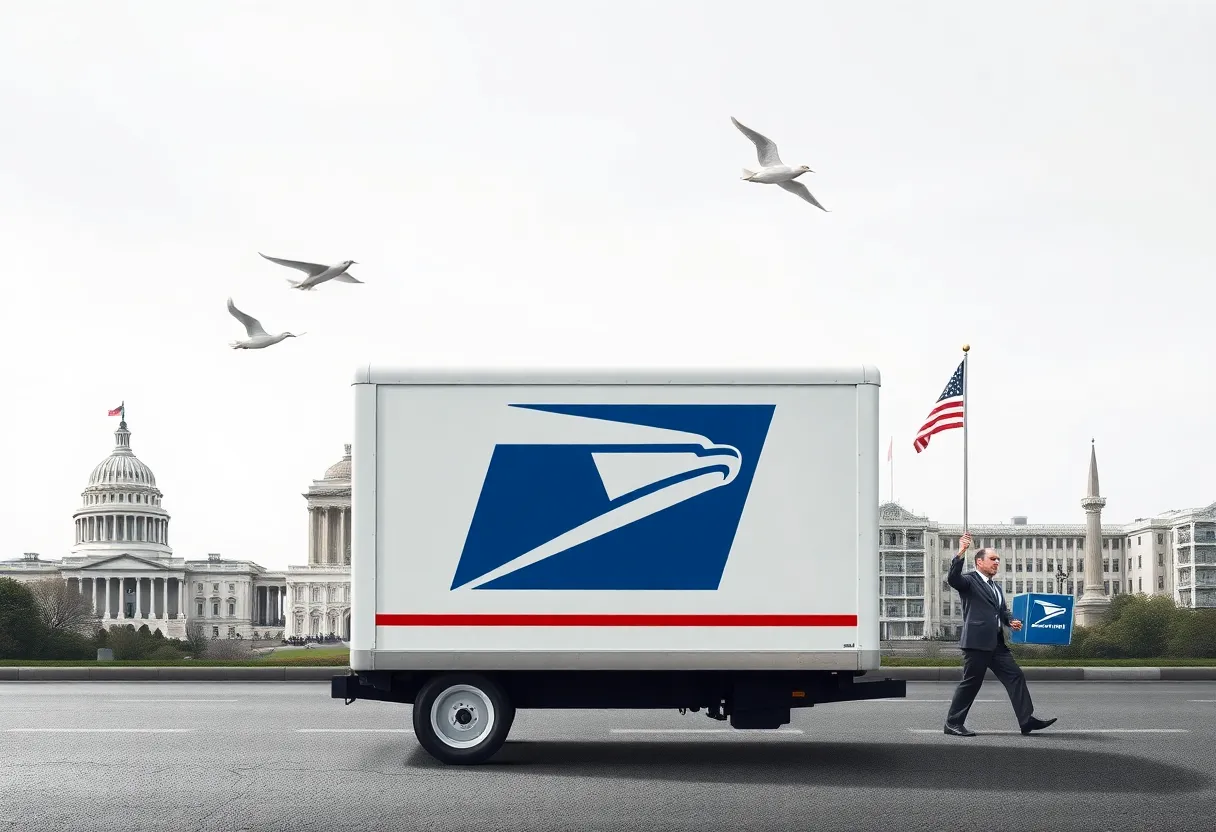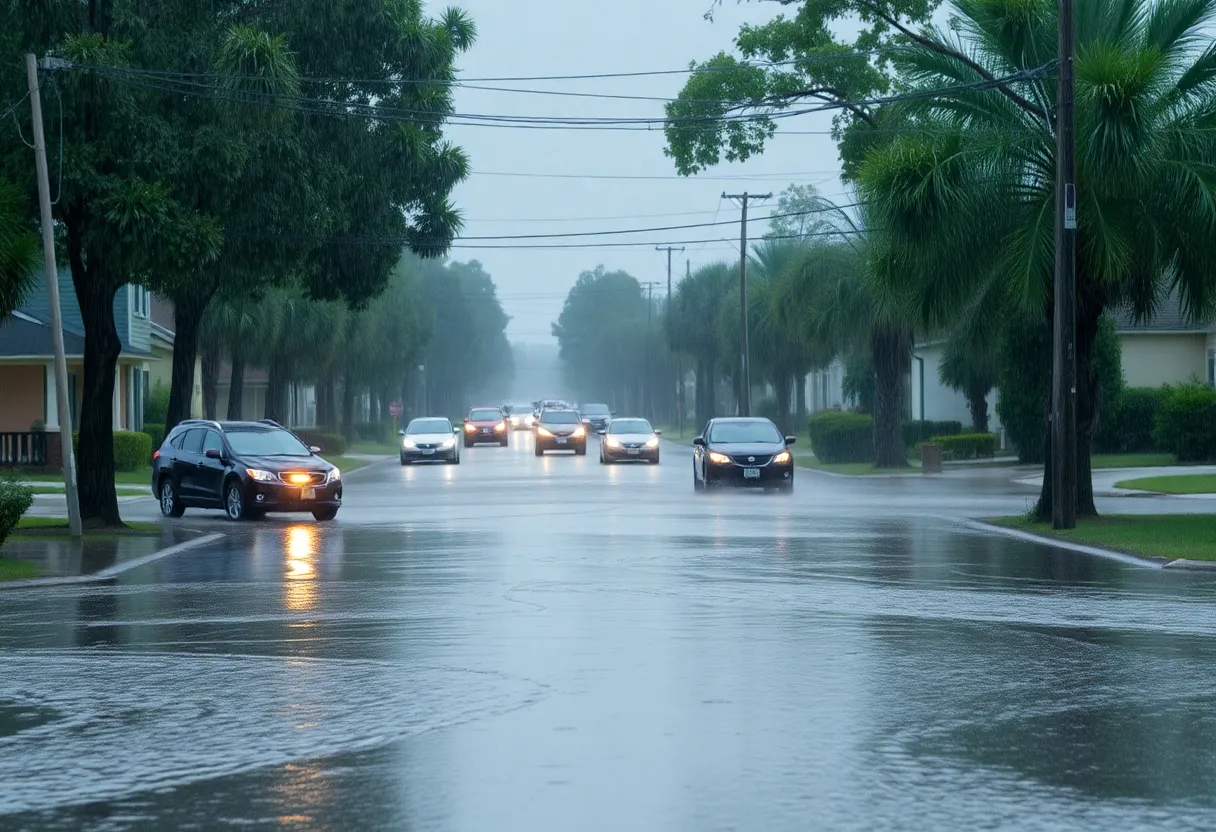News Summary
President Trump is reportedly planning to dissolve the current leadership of the U.S. Postal Service. This move may result in an executive order to restructure USPS governance, allowing for increased oversight by the Commerce Department. As the board prepares for a legal battle, concerns about the future of the Postal Service and potential privatization loom over the iconic institution, which has recently shown a profit amidst ongoing challenges.
President Trump Takes Aim at U.S. Postal Service Leadership
In a surprising move, President Donald Trump is gearing up to **dissolve the leadership** of the U.S. Postal Service (USPS), potentially bringing this iconic institution under the umbrella of his administration. Reports suggest that an **executive order** is on the horizon, which would effectively fire the existing members of the Postal Service’s governing board. If this plan goes ahead, the USPS would operate under the jurisdiction of the Commerce Department, overseen by Secretary Howard Lutnick, who Trump believes has the **business instincts** necessary for the job.
A Governance Battle Brewing
However, the USPS board isn’t taking this lightly. They are gearing up for a fight, having enlisted outside counsel to potentially sue if Trump moves forward with changes to their governance structure. Legal experts are weighing in, suggesting that Trump’s proposed order could violate federal law. While the dynamics of independent agencies being more closely tied to the White House are not unheard of, the USPS has traditionally been exempt from such orders, thanks to its distinct stature.
The USPS is governed by a board that is **bipartisan**, appointed by the president and confirmed by the Senate, ensuring a layer of political balance. Trump has previously floated the idea of privatizing the Postal Service, pointing to the changing delivery landscape dominated by players like Amazon and UPS. Just recently, Postmaster General Louis DeJoy announced his plans to **resign**, as his administration faced heightened scrutiny. Concerns about the direction of the USPS are gaining traction, especially among congressional Democrats who argue that privatization would jeopardize access to essential services.
History and Public Sentiment
Trump’s relationship with the Postal Service has been anything but smooth, as he has frequently criticized it and even threatened funding in exchange for heightened package delivery rates. For years, the USPS has been in the red, although there’s a glimmer of good news: they reported a profit in a recent quarter, marking their first such success since the onset of the pandemic. With around **640,000 workers**, the Postal Service is bound by law to deliver mail to all addresses, which includes providing service to rural areas.
The USPS traces its roots back to 1775 and evolved into an independent agency in 1970 in response to political pressures and a series of postal strikes. The **Postal Reorganization Act of 1970** was signed into law to protect the agency’s independence from political influence—a principle that now feels threatened under the current administration’s proposals.
Public Opinion and Moving Forward
Surveys show that public sentiment favors the Postal Service, with over **70% of Americans** expressing a positive view of it. There are growing concerns regarding how Trump’s proposal to potentially privatize could impact not just service delivery and pricing but also the job security of USPS employees. The **American Postal Workers Union** has condemned any effort to dismantle the governing board, branding it a **threat** to this vital public service.
Experts are weighing in, noting that any attempt to privatize the USPS would likely require **Congressional approval** due to the existing federal framework governing the agency. Trump has hinted at pursuing reforms, reflecting on earlier unsuccessful attempts at privatization back in 2018. The Post Office continues to navigate challenges, particularly with reduced first-class mail volumes while also experiencing a surge in demand for package deliveries due to the explosive growth of e-commerce.
What’s Next?
As the situation unfolds, it’s clear that the future of the Postal Service is at a **crossroads**. Will it remain the independent entity that has served the American people for centuries, or will it evolve under new leadership within a different governmental department? The coming days are bound to shed more light on this important national conversation, and everyone will be watching closely.
Deeper Dive: News & Info About This Topic
- Washington Post: Trump Targets USPS Leadership
- CNN: Trump’s USPS Privatization Plan
- AP News: Key Points on Trump’s Postal Service Proposal
- Reuters: Trump Considers USPS-Commerce Merger
- Rolling Stone: Trump’s Plans for USPS Control
- Wikipedia: United States Postal Service
- Google Search: Trump USPS
- Encyclopedia Britannica: United States Postal Service
- Google News: Trump USPS Privatization







